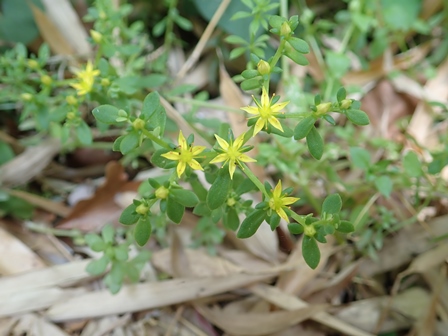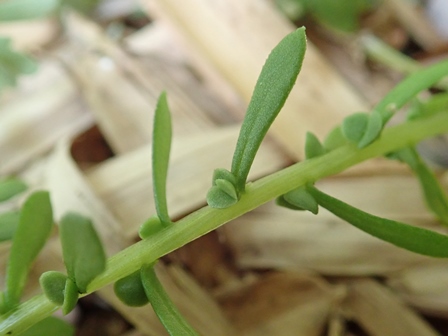フィールド日記
2020.06.05
コモチマンネングサ
コモチマンネングサが咲いています。植え込みや道路のわきなどいたるところに生えています。和名のコモチは子持ちを意味し、葉の付け根にムカゴを作って仲間を殖やすことに由来しています。
コモチマンネングサのムカゴは下の写真に見られる丸い多肉質の葉状のものです。梅雨の時期に自然に地面に落ち、ほぼそのままの形で冬を越します。春に急速に成長をして花を咲かせます。通常は種子をつくらないため、ほとんどムカゴによって仲間を殖やしています。
"コモチマンネングサ(komochimannengusa)" is in bloom now. They live near shrubberies and by roadsides, etc. "コモチ(komochi)" is written like this "子持ち" in Kanji and it means "having children". That's because they have propagules on the base of leaves.
The small-succulent-leaf-like things, which you can see in the second picture, are propagules of "コモチマンネングサ". The propagules fall onto the ground in rainy season called "梅雨(tsuyu)", then stay as they are until spring time. In spring, they rapidly grow up and bloom. "コモチマンネングサ" usually does not bear fruits so they leave offsprings only by its propagules.



















